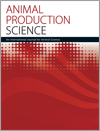
Animal Production Science
Volume 63 Number 5 2023
Welfare and wellbeing are evolving concepts. Interest in assessing positive welfare has focussed on positive mental experiences. In contrast, wellbeing recognises fulfilment of the individual’s potential to express positive health, positive social interactions, and a thriving physical constitution as additional positive attributes an animal can attain. New methods for analysis of sensor data are revealing integrity of biological function as an indicator of wellbeing. A framework is proposed that orientates biological integrity within an integrated description of welfare and wellbeing.
AN22285 Abstract | AN22285 Full Text | AN22285PDF (1.8 MB) Open Access Article
Detecting oestrus to facilitate the optimal timing of artificial insemination is key to optimal reproductive performance in dairy cows. The objective of the present study was to investigate the relationship between activity and milk oestradiol concentrations during peri-oestrus of lactating dairy cows. There was a quadratic relationship between milk oestradiol concentrations and activity on the day of oestrus. Higher oestradiol concentrations on the day of oestrus were also associated with a higher rate of pregnancy following insemination.
AN22341Evaluation of the productivity and feed value of Wondergraze and Redlands leucaena cultivars under grazing
 , C. S. McSweeney, G. J. Bishop-Hurley, J. Simington, J. Padmanabha and P. Giacomantonio
, C. S. McSweeney, G. J. Bishop-Hurley, J. Simington, J. Padmanabha and P. Giacomantonio
Psyllid-resistant leucaena cv. Redlands can produce levels of animal performance equal to those of the more established Wondergraze, achieving liveweight gains of 0.8 kg/day. Differences between Redlands and Wondergraze were small or non-existent, regardless of the parameter being compared, except for mimosine breakdown. High grazing-animal performance relies on a sustained optimum balance between grass and leucaena in the pasture.
AN22341 Abstract | AN22341 Full Text | AN22341PDF (1.8 MB) Open Access Article
AN22205Replacement of choline chloride with a plant source of choline in broiler chicken diets
 , Nadja Susana Mogyca Leandro, José Henrique Stringhini, João Marcos Monteiro Batista, Julio Cesar Lopes Brasileiro, Ana Paula Iglesias Santin, Veridiana Maria Brianezi Dignani Moura and Marcos Barcellos Café
, Nadja Susana Mogyca Leandro, José Henrique Stringhini, João Marcos Monteiro Batista, Julio Cesar Lopes Brasileiro, Ana Paula Iglesias Santin, Veridiana Maria Brianezi Dignani Moura and Marcos Barcellos Café
The consumer market for chicken meat demands increasingly natural products, so chicken diets should contain natural products whenever possible. This article studies natural sources of choline as an alternative to synthetic choline chloride. The results affirm that it is possible to replace the synthetic source of choline with natural plant sources, with added benefit of reducing serum low-density lipoprotein in broilers.
Duck meat is a good source of protein, but it is high in cholesterol. Cholesterol levels in duck meat can be adjusted by including alfalfa in a duck’s diet. Meat of hybrid ducks had lower total cholesterol (higher HDL, lower LDL) when feed was supplementated with up to 6% (on a dry matter basis) alfala. Alfalfa is a legume that easy to adapts easily to the tropical environments, so could be used to reduce cholesterol in duck meat worldwide.
Sheep were fitted with sensors to record hourly temperature and humidity in the breech over 49 days before the onset of the blowfly season. Sheep susceptible to breech strike had higher humidity in the breech than resistant sheep. Further studies needs to be undertaken to determine whether humidity may qualify as a potential indirect indicator trait to differentiate between sheep resistant and susceptible for breech strike.
AN22230Environmental impacts of the Australian poultry industry. 1. Chicken meat production
Chicken meat is Australia’s most consumed animal protein; increased consumption has led to expanded production. Expectations that industries improve sustainability and reduce emissions necessitate understanding and benchmarking impacts. Productivity and efficiency improvements have reduced fossil-energy and land-occupation per kilogram of production over time. Direct emission intensity has also decreased, but impacts from Argentinian soybean meal increased in the past decade. Impacts per kilogram were low compared with other proteins. Continuous improvement is needed to reduce impacts, ensuring long-term, sustainable production.
AN22230 Abstract | AN22230 Full Text | AN22230PDF (1.6 MB) | AN22230Corrigendum (1.2 MB) | AN22230Supplementary Material (379 KB) Open Access Article
Agri-food industries are under increasing pressure from governments, customers and consumers to report and improve environmental performance. The lack of a published quantified analysis for the Australian egg industry is rectified in this study, which has shown that Australian eggs are a low environmental-impact animal protein and impacts per kilogram are generally lower than in international egg production. Opportunities to further improve the environmental credentials of Australian eggs lie in improved production efficiency and changes to diet formulations.
AN22230_COCorrigendum to: Environmental impacts of the Australian poultry industry. 1. Chicken meat production
AN22230_CO Abstract | AN22230_COCorrigendum (1.2 MB) Open Access Article



